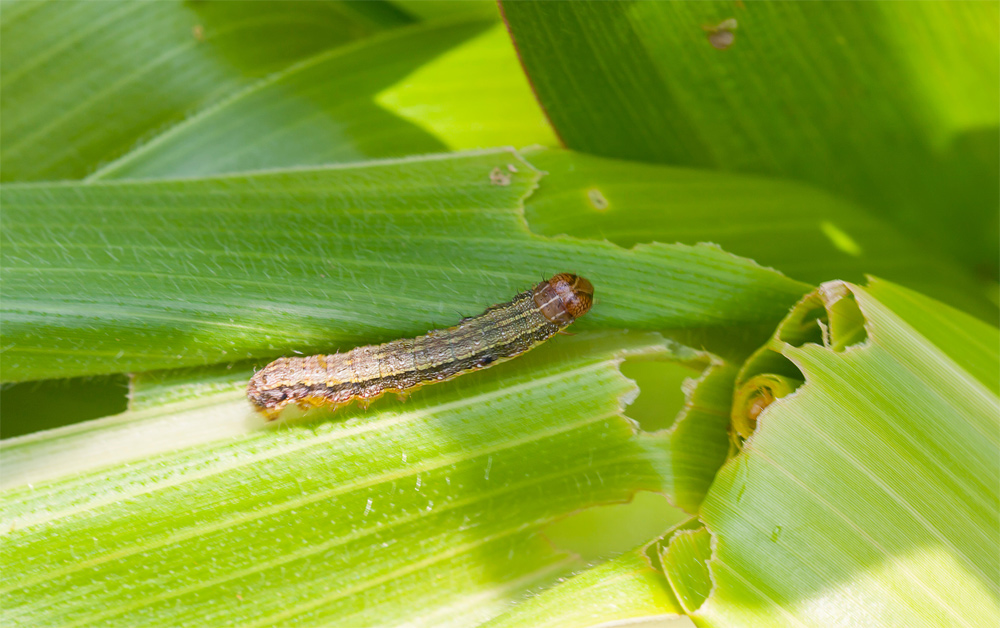Pests pose a significant threat to corn production, making pest management essential for protecting crop health and yield. Identifying common corn pests early is critical. Key pests like corn borers, rootworms, and aphids cause noticeable damage in fields, affecting plant growth and, ultimately, crop productivity. Early signs of infestation include yellowing leaves, wilting, and holes in stems and leaves. Frequent crop scouting allows farmers to catch these early indicators, enabling timely action to prevent further spread.
Understanding pest symptoms also helps in targeted pest control. For instance, the presence of ragged leaf edges or small holes can indicate corn borer damage, while root damage often suggests rootworms. Effective identification of these symptoms empowers farmers to apply the right management techniques, reducing reliance on broad-spectrum pesticides and maintaining a balanced ecosystem.
Impact of Corn Pests on Yield and Crop Quality
Corn pests can significantly reduce yields and affect crop quality, ultimately impacting profitability. Corn borers, for instance, create holes in stalks and ears, weakening plant structure and increasing susceptibility to disease. Aphids, on the other hand, drain plant sap, leading to stunted growth and reduced kernel production. In heavily infested fields, yield losses can exceed 30%, posing a serious risk to farm revenue.
Additionally, pest damage impacts the quality of corn by allowing diseases and fungi to proliferate, resulting in crops that may not meet market standards. By understanding how pests affect yield and quality, farmers can implement more effective, targeted management strategies.
Integrated Pest Management Strategies for Corn Fields
Integrated Pest Management (IPM) combines various pest control techniques to create a balanced, sustainable approach. IPM strategies focus on preventing pest outbreaks, using biological, cultural, and chemical controls as needed. For example, crop rotation disrupts the lifecycle of rootworms, while intercropping can reduce the spread of pests. Monitoring pest populations through scouting and using threshold levels also helps avoid unnecessary spray applications.
Implementing IPM reduces the environmental impact of pesticides and builds long-term pest resistance in fields. By focusing on prevention, IPM keeps pest levels low, ensuring minimal crop damage while maintaining a healthier ecosystem.
Biological Control Options: Utilizing Natural Predators and Parasites
Biological control is a valuable component of IPM, using natural predators and parasites to manage pest populations. Introducing beneficial insects, such as ladybugs, lacewings, and parasitic wasps, reduces the need for chemical interventions. Predators specifically target pest species, providing ongoing control without harming plants or beneficial organisms.
Effective biological controls include:
- Ladybugs: Consume aphids, reducing sap loss.
- Parasitic wasps: Target and reduce corn borers.
- Lacewings: Prey on a variety of soft-bodied pests.
- Ground beetles: Feed on rootworms, protecting plant roots.
- Predatory mites: Help control spider mite infestations.
Chemical Control Measures: Safe and Effective Pesticide Use
While biological methods are effective, some pest infestations require chemical control for immediate results. Chemical pesticides offer a rapid solution but should be used carefully to minimize environmental impact. Farmers should choose pesticides targeting specific pests to avoid harming beneficial organisms.
Guidelines for effective pesticide use:
- Rotate pesticides to reduce pest resistance.
- Follow recommended application rates and timings.
- Wear protective equipment to ensure applicator safety.
- Avoid spraying in windy conditions to prevent drift.
- Observe pre-harvest intervals for residue safety.
Monitoring and Preventative Practices for Long-Term Pest Control
Long-term pest control involves regular field monitoring and implementing preventative measures. Scouting allows early detection of pest populations, while practices like crop rotation, residue management, and maintaining field sanitation reduce pest habitat. Building resilient soil through organic matter also supports a balanced ecosystem that naturally suppresses pests.
How AgNote Can Help
AgNote’s farm management platform simplifies pest monitoring and management by providing tools to track pest outbreaks, monitor field conditions, and record pesticide applications. With AgNote, farmers gain insights into pest trends and treatment effectiveness, allowing for data-driven decisions that safeguard yields and crop quality. Sign up for AgNote’s 7-day free trial to enhance your pest management strategies and keep your crops thriving.
